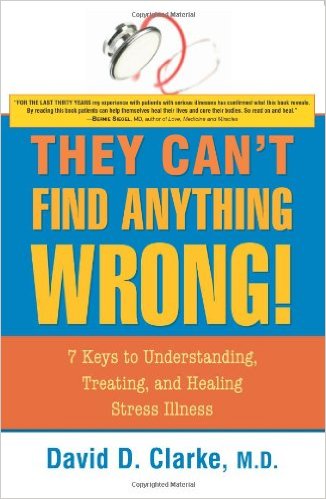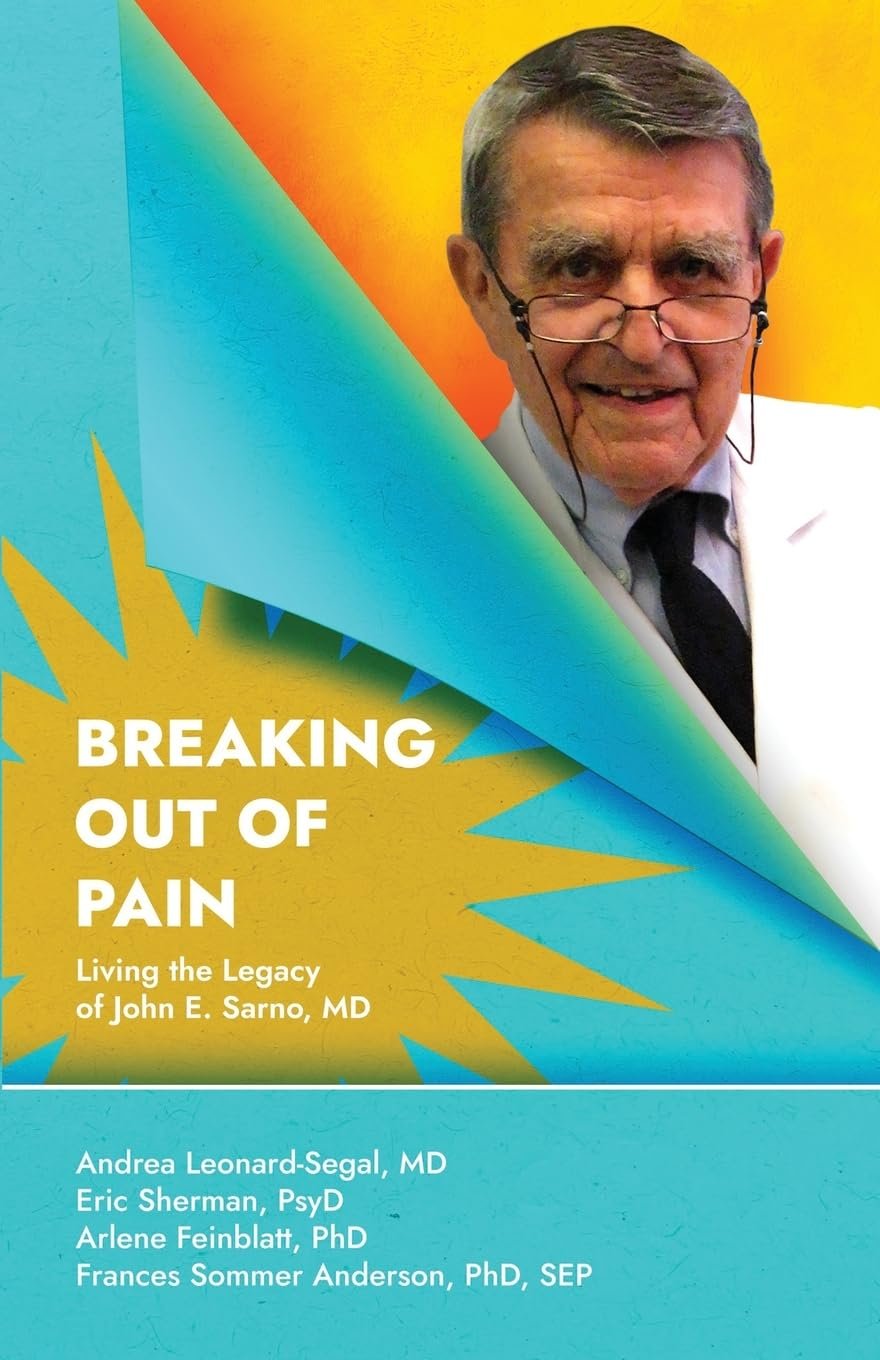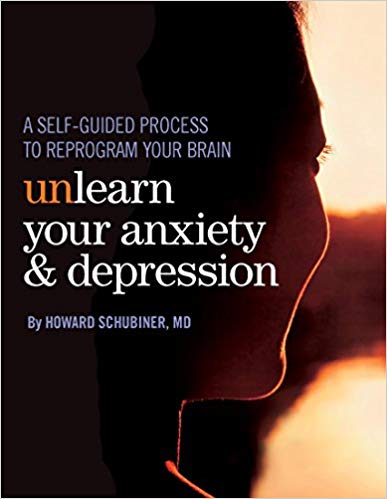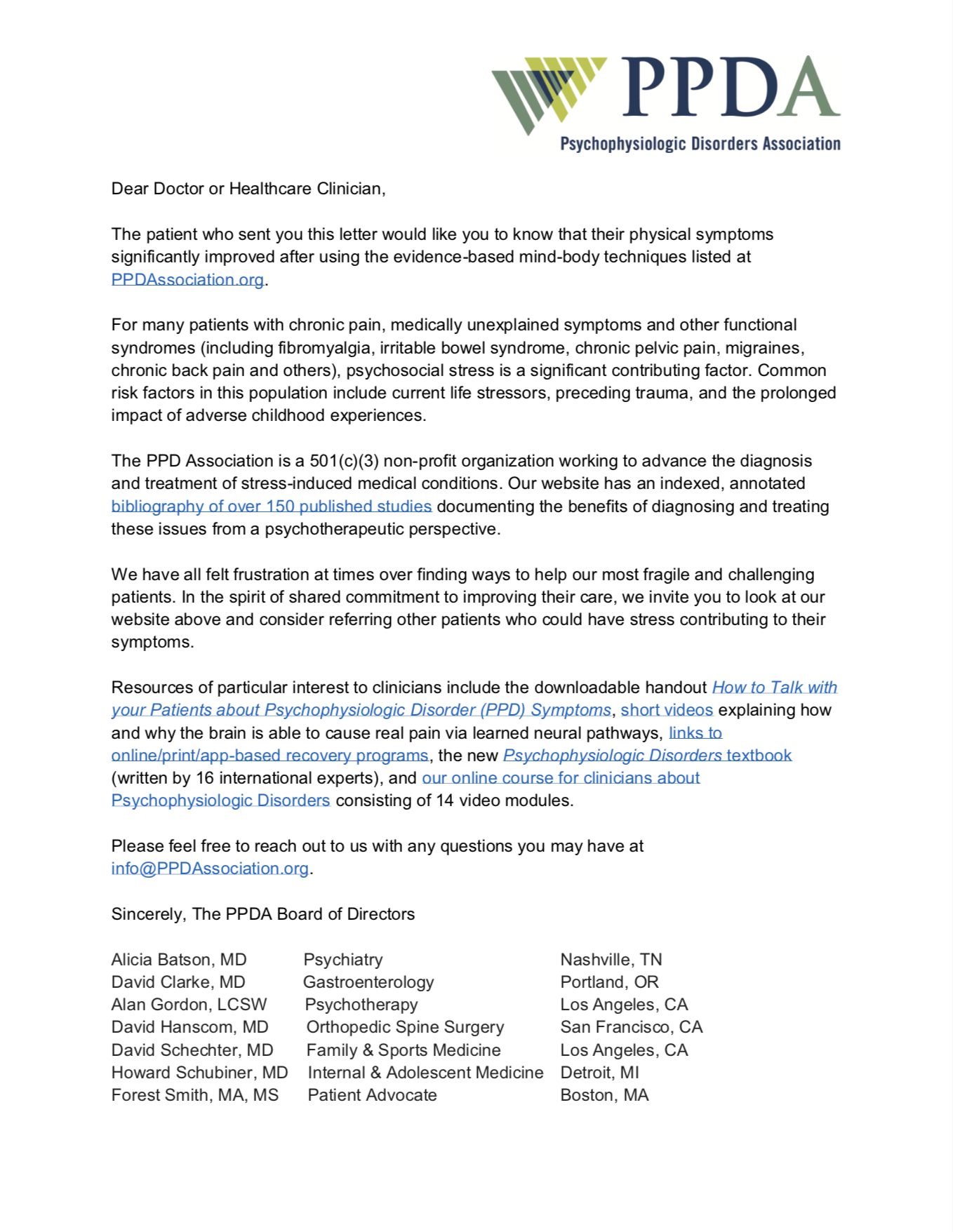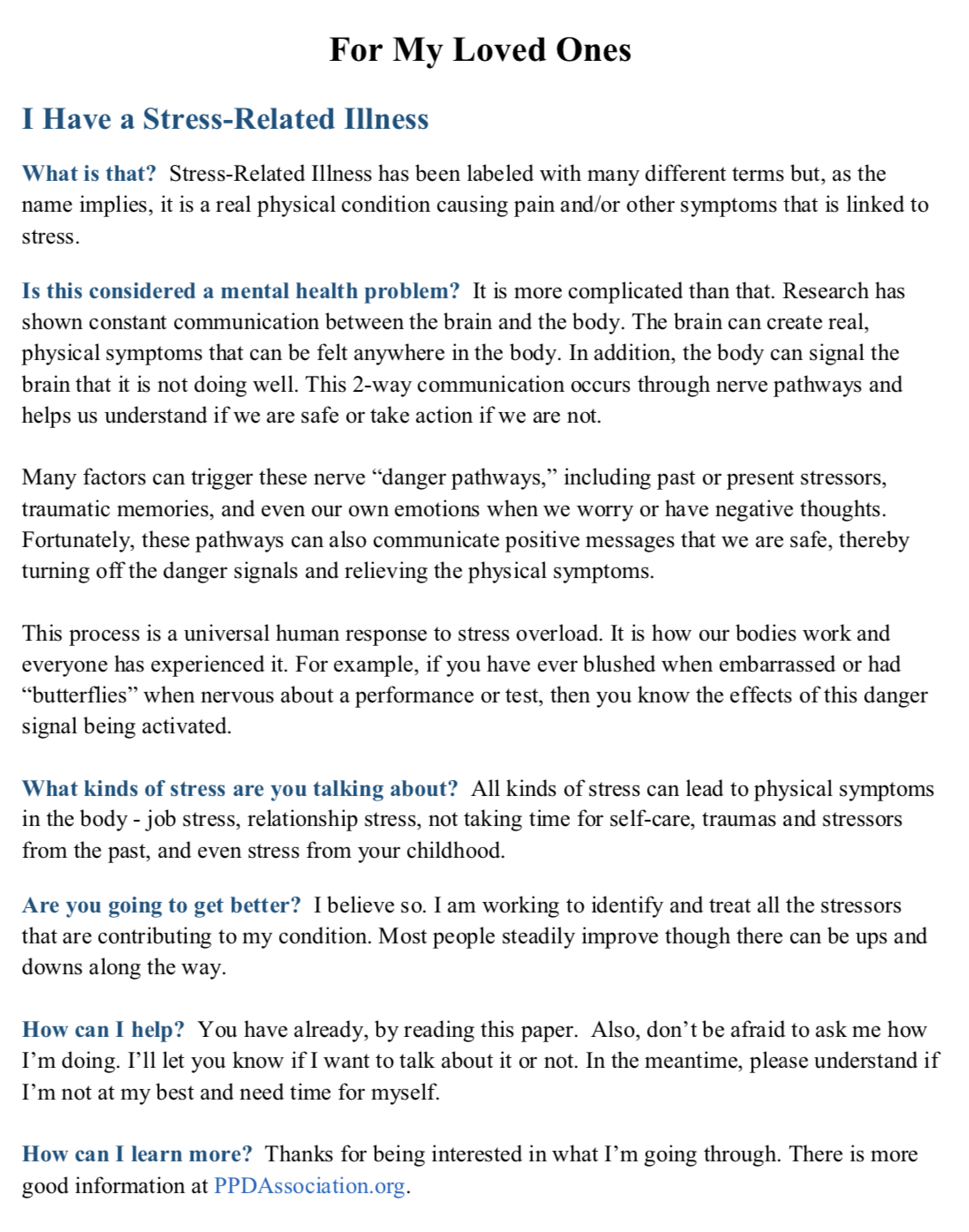Patients
Patients suffering from Psychophysiologic Disorders (aka PPD or Mindbody Disorders) can greatly benefit from utilizing the educational resources below! With a proper diagnosis being the first step toward recovery, education about PPD is the second and equally necessary step!
Health Professionals
Health professionals can benefit from our curated list of educational resources to understand our evidence-based, biopsychosocial approach to treating chronic pain, functional syndromes, and medically unexplained symptoms. We also offer continuing education and an annotated and indexed bibliography.
About Psychophysiologic Disorders
Start Here
YOUR PAIN IS REAL. THE SOLUTION IS, TOO. Many years of clinical experience and considerable recent research has shown that stress, trauma and repressed emotions are capable of causing persistent, real pain and other physical symptoms. This is what we call a Psychophysiologic Disorder (aka PPD or Mindbody Disorder). Unfortunately, there is no conclusive diagnostic test for this condition so the single most common question patients have is whether their personal symptoms could be caused by PPD. Visit this page to learn more.
Learn More
Psychophysiologic Disorders (PPD) is the clinical term for mindbody symptoms, meaning symptoms that are caused by neural pathways that develop in response to stress, trauma, and repressed emotions. These learned neural pathways are anatomical changes in the brain, which means that the resulting symptoms are generated in the brain and not “in your head.” The symptoms are very real and can be chronic and debilitating, but the good news is they are also benign and curable! Visit this page to learn more.
Health Professionals
Start here if you are a Mental Health Professional or Medical Professional.
Self-Assessment
Books
100% of the royalties from these three books support our nonprofit mission to end the chronic pain epidemic & opioid crisis.
Psychophysiologic Disorders
(2019). Did you know that one in six adults and 30-40% of primary care patients suffer from medically unexplained symptoms, chronic functional syndromes or psychosocial factors linked to chronic pain? Collectively these are known as Psychophysiologic Disorders or PPD. A trauma-informed, evidence-based approach to diagnosis and treatment can transform these patients from among the most frustrating to the most rewarding and give them a far better chance for a full recovery. As one family physician who learned these concepts said: “It put the joy back into my practice.”
From this innovative book, medical and mental health professionals will learn to relieve (not just manage) physical symptoms by assessing for and treating current life stresses, past traumas, suppressed emotions and the prolonged impact of adverse childhood experiences (ACEs). The sixteen authors from five countries are among the most experienced (averaging 20 years) PPD clinicians in the world. They are also remarkably diverse, practicing in the fields of Adolescent Medicine, Family Medicine, Gastroenterology, Health Journalism, Integrative Medicine, Internal Medicine, Movement Therapy, Neuroscience, Orthopedic Spine Surgery, Pain Medicine, Physiotherapy, Psychiatry, Psychoanalysis, Psychology, Psychotherapy, and Sports Medicine. From this wide range of backgrounds, the authors reached consensus on a core set of practices that were a revelation for them and their patients. These concepts are practical and can readily be implemented by any healthcare professional.
A DIAGNOSTIC GUIDE FOR PSYCHOPHYSIOLOGIC DISORDERS
Did you know that one in six adults and 40% of primary care patients suffer from medically unexplained symptoms, chronic functional syndromes, or psychosocial factors responsible for chronic pain? Collectively these are called Psychophysiologic Disorders or PPD. As recent research has confirmed, a trauma-informed approach to diagnosis and treatment can transform these patients from among the most frustrating to the most rewarding and give them a far better chance for a full recovery. This process was described in detail in the previous volume from the PPD Association titled Psychophysiologic Disorders (KDP Publishing, 2019).
A key barrier to implementing this approach is that most medical clinicians lack formal training in assessing for PPD and most mental health professionals lack knowledge of medical diagnoses. This book addresses that blind spot with a table of hundreds of medical diagnoses that are common in PPD patients. The table explains each diagnosis and describes the contribution from PPD without jargon or technical terms. It is based on published evidence and the authors’ experience diagnosing and treating PPD in thousands of patients.
Also included is an introduction to the diagnostic process for PPD that includes the authors’ most recent recommendations. There is also a detailed self-assessment questionnaire for patients that is designed to provide insight into how well their condition fits the biopsychosocial context commonly associated with PPD. As in the companion book Psychophysiologic Disorders, the concepts are practical and can readily be implemented by any healthcare professional.
Learning this approach is more than just clinically effective. As one family physician who learned these concepts said: “It put the joy back into my practice.”
They Can't Find Anything Wrong!
By PPDA President David Clarke, MD (2007). Uses dozens of case histories to illustrate the many hidden life stresses that can cause physical symptoms. Discusses effective treatment techniques in detail.
A President of the American Psychosomatic Society wrote "Dr. Clarke has done a truly remarkable job of clarifying for patients and health care providers alike the essence of how mind and body interact in human illness. Through clearly written and captivating stories from his practice, he demonstrates how both patients and physicians can apply his teachings in a therapeutic manner. I plan to recommend this book to my patients."
Dr. Clarke's book was also recommended by Brit + Co as one of the five best books ever written about the mindbody connection.
More Books
Alphabetical by author
Hidden From View
By Alan Abbass, MD, and PPDA Co-Founder Howard Schubiner, MD (2018). Using cutting edge psychotherapeutic and neurophysiologic principles, Hidden From View explains how the brain developed neural pathways that cause symptoms, such as headaches, irritable bowel and bladder syndrome, fibromyalgia, fatigue, insomnia, and chronic neck and back pain. It illustrates powerful emotion focused interviewing techniques to both detect and treat psychophysiologic disorders. Hidden From View empowers physicians, social workers, psychologists, nurses, physical therapists and coaches to understand and diagnose psychophysiologic disorders, and provide educational, cognitive-behavioral, and emotion focused therapies. This will help your patients eliminate, rather than simply cope with, these conditions.
The Hidden Psychology of Pain
By James Alexander PhD (2012). The author's life was redefined by a tragic car accident followed by chronic physical and emotional trauma. Now pain-free, Dr Alexander has dedicated the last three decades of his life to helping others overcome similar challenges. His success is proof that recovery from chronic pain is possible.
Pathways to Pain Relief
By PPDA Co-Founders Frances Sommer Anderson PhD & Eric Sherman PsyD (2013). A book for therapists and the public summarizing decades of experience diagnosing and treating PPD.
My Migraine Breakthrough
Lee Canter’s chronic migraine journey can be summarized by the following grim numbers: 7 years practically bedridden, 10 doctors, 15 medications, 3 hospitalizations, 2 pain psychologists, and 6 alternative medicine treatments. None of these brought him the relief he needed.His life was consumed by the darkness of this debilitating disease. In his resourceful book, My Migraine Breakthrough, he does not dwell on how sick he was, but instead, he focuses on what he learned that enabled him to once and for all cure his migraines. If you, like Lee, find your life consumed with the pain and fear of migraines, his story is one you must read.
The Way Out
By PPDA Co-Founder Alan Gordon, LCSW with Alon Ziv (2021). Alan is a psychotherapist, founder of the Pain Psychology Center, and developed Pain Reprocessing Therapy (PRT). PRT is a system of psychological techniques that rewires the brain to break out of the cycle of chronic pain. The PPDA-sponsored a randomized controlled trial on PRT at the University of Colorado, and the results were remarkable. By the end of the study, the majority of patients were pain-free or nearly pain-free. What's more, these dramatic changes held up over time. The Way Out brings PRT to readers. It combines accessible science with a concrete, step-by-step plan to teach sufferers how to heal their own chronic pain.
Back in Control - 2nd edition
By David Hanscom, MD (2012). Focuses on an aspect of chronic pain that the medical world has largely overlooked: you must calm your nervous system in order to get better. Has helped hundreds of patients.
Breaking Out Of Pain: Living the Legacy of John E. Sarno, MD.
By Andrea Leonard Segal, MD, Eric Sherman, PsyD, Arlene Feinblatt, PhD, and Fran Anderson, PhD, SEP. The book celebrates who Dr. Sarno was as a person, as well as the development of his diagnostic and treatment approaches to patients that benefit all of us in our work. It describes the experiences that the four of us had with him as a doctor, teacher, and colleague, and how his pioneering work influenced each of us and impacts our treatment of patients.
Childhood Disrupted
By Donna Jackson Nakazawa (2015). Shows the link between Adverse Childhood Experiences (ACEs) and adult illnesses such as PPD, heart disease, autoimmune disease, and cancer—Childhood Disrupted also explains how to cope with these emotional traumas and even heal from them.
Chronic Pain: Your Key to Recovery
By Georgie Oldfield (2014). Reveals how very real, and even debilitating pain, can frequently be caused by our brain in response to repressed emotions as a result of current and even past experiences.
Healing Back Pain
By John Sarno, MD (1991). Dr. Sarno's groundbreaking research on TMS (Tension Myoneural Syndrome) reveals how stress and other psychological factors can cause back pain-and how you can be pain free without drugs, exercise, or surgery.
The Divided Mind
By John Sarno, MD (2007). The Divided Mind is the crowning achievement of Dr. Sarno's distinguished career as a groundbreaking medical pioneer, going beyond pain to address the entire spectrum of psychosomatic (mindbody) disorders.
The Mindbody Prescription
By John Sarno, MD (1999). Reveals how many painful conditions- including most neck and back pain, migraine, repetitive stress injuries, whiplash and tendonitis- are rooted in repressed emotions and shows how they can be successfully treated without drugs, physical measures or surgery.
Think Away Your Pain
By David Schechter, MD (PPDA Board) (2014). You will learn how chronic pain becomes a condition of the brain as much as the body. Shows you how to use the immense power of your thoughts and beliefs to literally change the neural circuitry of your brain.
Understanding and Healing from TMS
By David Schechter, MD (PPDA Board) (2019). TMS is a way of understanding and treating pain that focuses on the psychological rather than the structural or chemical. This book attempts to explain that mindbody connection, clarify who is a candidate for this approach, and detail the relevant psychology of the condition. The treatment for TMS is education and psychological insight, hence the emphasis on educational materials in this field.
Unlearn Your Anxiety and Depression - second edition, 2022
By PPDA Co-Founder Howard Schubiner, MD.
Using cutting-edge research, this book demonstrates that the underlying reason for the majority of anxiety and depression is learned neural circuits. Dr. Schubiner has used this new understanding to develop a unique program to actually reverse anxiety and depression. By reading this book, you'll be able to determine if you have this syndrome and how to overcome it. The program in this book gives instruction on emotional processing, therapeutic writing exercises, and everything else you need to unlearn your anxiety and depression. Access to online audio meditation exercises is included with purchase. Note: The final 7 chapters and the audio meditations are identical to that of Unlearn Your Pain, fourth edition. You can obtain the first 5 chapters or the whole book as an eBook on the kindle or apple reader platforms.
Unlearn Your Pain - fourth edition, 2022
By PPDA Co-Founder Howard Schubiner, MD.
Reversing chronic pain is possible by understanding its underlying cause. This book explains that most pain is due to learned nerve circuits. By reading this book, you'll be able to determine if you have this syndrome and how to overcome it. The program in this book gives instruction on emotional processing, therapeutic writing exercises, and everything else you need to unlearn your pain. Access to online audio meditation exercises is included with purchase. Note: The final 7 chapters and the audio meditations are identical to that of Unlearn Your Anxiety. You can obtain the first 5 chapters or the whole book as an eBook on the kindle or apple reader platforms.
Mobile App
Curable
A mobile app for treating mindbody disorders at the level between a great PPD book and a session with a PPD Practitioner. Several of the PPDA Board members are also on Curable’s Scientific Advisory Board.
Online Course
Online Course #1: Psychophysiologic Diagnosis and Treatment
PPDA course led by Dr David Clarke and Jessica Shahinian. Learn how to successfully diagnose and treat chronic functional syndromes, medically unexplained symptoms and the psychosocial factors in chronic pain.
Assess for current stresses, limitations in self-care skills, the long-term impact of Adverse Childhood Experiences (ACEs) and somatic presentations of Depression, PTSD and Anxiety
Develop empathy skills that enable understanding of issues that patients struggle to articulate
Apply treatment measures that meet the specific needs of each patient
Designed for health professionals but jargon is minimized to be helpful to patients. Available in a Professional Bundle (Parts 1-3, 6 hours) or Patient Bundle (Parts 1-2).
Online Course #2: Challenging Psychophysiologic Cases
This course builds on the Psychophysiologic Diagnosis and Treatment course and is jargon-free so that everyone can benefit. The course provides deeper insights into all patients with PPD and into advanced techniques of Emotional Awareness and Expression Therapy by focusing on those who are particularly difficult to diagnose or treat.
You will learn about recent research in PPD and how to successfully diagnose and treat:
Stressful personality traits
Triggers (people, events or situations linked to past trauma)
Repressed emotions
Pain or illness linked to self-image and worldview including in:
a. Adolescents
b. People with strong religious beliefs
These concepts are based on published research and the most challenging patients selected from over 7000 people suffering from PPD. The course was developed through 40 years of presentations to physicians, mental health professionals, physician assistants, nurse practitioners, behavioral health consultants and psychology graduate students throughout North America and Europe.
YouTube Channels
PPD Association
Our web series that includes videos about the PPDA and our work, as well as a preview of our online continuing education course about PPD (mindbody disorders).
GotPainCure
An engaging web series by Jessica Shahinian on how to diagnose and treat PPD (aka Tension Myoneural Syndrome) with bright illustrations that make this series easy to watch and share. Jessica also shares how she made a rapid recovery from over 30 PPD symptoms that threatened to end not only her dance career, but also her life!
Curable
Did you know that several current and former PPDA Board members are Scientific Advisors for Curable, advising on their mobile app, Curable Groups, and other products and services. Their YouTube channel includes webinar recordings Hope for Healing with Dr. John Stracks and guest PPD practitioners and recovered patients.
Georgie Oldfield
Georgie is the founder of SIRPA, an organization dedicated to promoting the concept that pain can be due to learned nerve pain pathways rather than physical abnormality, hence full recovery is possible once the pathways are reversed. As well as treating patients and training health professionals, Georgie gives talks and writes widely about the concept.
The Pain PT - Healing Chronic Pain
The Pain PT was founded by Jim Prussack, a licensed physical therapist. The mission of The Pain PT YouTube channel is to educate people about the impact of the brain and nervous system in chronic health disorders and how they can tap into the power of the mindbody relationship to heal.
Feelings & Stuff
A playful web series about mindbody medicine hosted by two psychotherapists formerly at the Pain Psychology Center - Daniel G. Lyman, LCSW and Christie Uipi, LCSW.
Educational Videos
Learning more about Psychophysiologic Disorders (PPD) is a great way to begin relieving PPD symptoms.
Webinars
Hope for Healing
Curable’s YouTube series features ongoing webinars with Dr. John Stracks and guest PPD practitioners and recovered patients.
Dr Stracks Mindbody Medicine Webinar
Learn what causes Mindbody Disorder (PPD) and how to recover in this 1hr 52min introductory webinar led by John Stracks, MD.
Dr Stracks & Dr Hanscom Webinar
This 1hr 43min webinar by John Stracks, MD about Mindbody Disorder (PPD) features spine surgeon David Hanscom, MD.
Dr Kevin Cuccaro Free Pain Education Modules
Why We Hurt & What To Do About It - Designed for non-clinicians, this free program introduces three key concepts from pain science including: What is Pain? What misconceptions make it worse? How to think differently for safe, effective, treatment.
The Pain Class (Pain 101) provides healthcare clinicians with an introduction to modern pain neuroscience and uses a unique conceptual model to demonstrate how to comfortably and confidently approach pain treatment in clinical practice.
Emotional Awareness and Expression Therapy (EAET)
EAET is a novel therapy that has been shown to be effective in the treatment of PPD conditions in randomized, controlled clinical trials. It was developed by Mark Lumley, PhD and Howard Schubiner, MD as a method of helping people identify, experience, express and release emotions that are at the core of PPD symptoms. This course will present the theory, rationale, and core principles of EAET; and teach its techniques through presentations, demonstrations, video recorded case examples, and experiential practice. The five class sessions will be led by a team including the developers of EAET and those who use it regularly in practice. This training program is open to medical and behavioral professionals. CE credits are available for psychologists and social workers.
Reign of Pain
Entitled Reign of Pain, this course consists of 16 brief videos, plus readings, online resources and reflection activities with a discussion board for the public. It's a free resource that attempts to provide the general public with advanced information about predictive processing and how the brain works, what syndromes are likely to be psychophysiologic in nature, how we determine that and how we treat it.
Podcasts
Tell Me about Your Pain
Co-Hosted by PPDA Co-Founder Alan Gordon, LCSW & Alon Ziv. “A Podcast Where Real Chronic Pain Sufferers Meet Science-Backed Solutions. Join us as our expert hosts help listeners overcome obstacles to healing through evidence-based techniques.”
Back in Control Radio
Discover how to conquer debilitating chronic pain by using a groundbreaking, self-directed approach pioneered by Dr. David Hanscom. His methods have been used by hundreds of patients to eliminate chronic pain and regain control of their lives.
Like Mind Like Body
A great podcast by Curable and hosted by Laura Seago, interviewing PPD/TMS practitioners, recovered patients and sharing helpful thoughts on how to recover.
Treatment Programs
Start your recovery from chronic pain and/or medically unexplained symptoms today with one of these curated programs.
Practitioner Directory
Find a health professional familiar with evidence-based treatment approaches for PPD.
Infographics
Click to view helpful chronic pain infographics from the following sources:
Websites
Listed alphabetically:
BackinControl.com - Educational programs and books by Dr. David Hanscom
Medical Myopia and Common Sense - Blog post by PPDA Co-Founder Dr. Howard Schubiner commenting on several recent publications in the news media and scientific journals.
MindbodyMedicine.com - Educational programs and books by Dr. David Schechter (PPDA Board)
PathwaysToPainRelief.com - Book, continuing education and other resources by Frances Sommer Anderson, PhD and Eric Sherman, PsyD (PPDA Co-Founders)
SIRPA.org - The Stress Illness Recovery Practitioners’ Association founded by Georgie Oldfield, MCSP. SIRPA, like the PPDA, also educates health professionals on how to diagnose and treat PPD and provides patient resources.
StressIllness.com - Educational resources by PPDA President Dr. David Clarke
TMSWiki.org - Founded by PPDA Vice President Rob Munger. The TMS Wiki focuses on Tension Myoneural Syndrome (aka PPD) recovery success stories as a healing resource for patients, with lots of forums for patients to share their stories and ask questions with a TMS/PPD practitioner. Alan Gordon’s free pain recovery program is also available as one of many resources.
UnlearnYourPain.com - Online Mind Body Program, continuing education, books and other offerings by PPDA Co-Founder Dr. Howard Schubiner
Explaining PPD to Others
PPDA Patient Letter To Doctor
Help spread awareness about PPD by sending this letter to your doctor or healthcare provider. If they weren’t already familiar with how to properly diagnose and/or treat mindbody disorders, this letter will give them a great starting place on where to learn more - and we’re always here to help!
PPDA Patient Letter To Loved Ones
Not sure how to explain PPD (aka Mindbody Syndrome or Stress-Related Illness) to your loved ones? Use our letter, or let this be a template for your own version, to communicate with your loved ones about what you’re going through. This way, they are encouraged to learn more by visiting our website instead of requiring you to explain everything to them upfront - letting you focus on self-care and recovery.
Guide For Health Professionals
Our guide “How to Talk with Your Patients about Psychophysiologic Disorders (PPD)” is a must-read for all health professionals - your patients will thank you for it! Developed by Alicia Batson, MD (former PPDA Board) and David Clarke, MD (PPDA President).
Bibliography
We recommend evidence-based psychological techniques for diagnosis and treatment of (and relief from) persistent physical symptoms that are not caused by organ disease or structural abnormalities. We refer to this form of illness as Psychophysiologic Disorders (PPD) and the symptoms include chronic pain, medically unexplained symptoms, chronic functional syndromes and somatisation disorders. However, because a wide range of specialties has addressed these issues, the relevant science has been published in a very large number of journals making it a challenge to gather in one place.
Consequently, few clinicians are aware of the quality and quantity of evidence supporting a psychological approach to PPD symptoms. This bibliography attempts to compile the best scientific research (200+ research papers) into a single document. We welcome recommendations for additions to the bibliography via emailing info@PPDAssociation.org.
This document includes an index to the clinical and scientific dilemmas addressed by the research followed by an annotated bibliography listed alphabetically by first author. We hope you find the evidence helpful in accounting for the excellent outcomes we observe in our clinical practice.
Additional Language Resources
We have a curated list of resources in additional languages for non-English speakers. Click here to view.
If you know of more great resources in other languages, contact us by email to let us know.





